Gotta have something between the birds…
On an outing along the Eno River a couple of days back, the trails we usually take were closed down for utility work, so we traipsed up over the hilltops on the ridge trails, usually well away from the water and thus with fewer subjects to be found. Spring has finally taken a good hold, however, and that means being able to find a few more species with a little effort.
Passing by one stump, I caught a hint of movement as something dark slid out of sight, and we paused to wait it out. It didn’t take long.
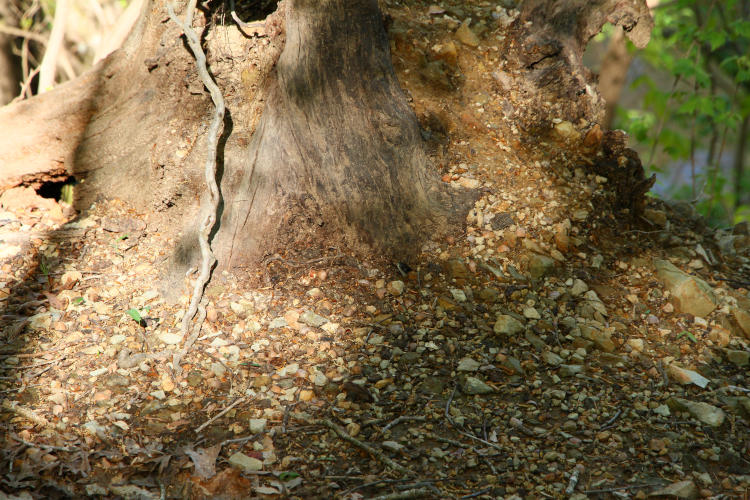
This is the wide, establishing shot, representing pretty much what we saw without magnification – you’re looking for the thing that doesn’t belong. Well, okay, it belongs there more than we do, but what I meant was, the thing that isn’t inanimate. The thing we’d have an interest in photographing.
But sure, let’s go in closer.

That’s (now) an eastern rat snake, formerly black rat snake (Pantherophis alleghaniensis,) and a little one at that, edging out to take advantage of the warm sunlight after a slightly chilly night. We waited a little, but it was disinclined to venture further out and we eventually left it alone.
No flash was used for this despite appearances, by the way – it’s just the morning sun directly at our backs.
Even the birds were maintaining a bit of distance, save for some noisy titmouses, so I started overturning promising logs in search of subjects – carefully, because this was prime copperhead country and the various leaves off of the trail were perfect camouflage for such. The right kind of log is one that looks like it’s been down for a while, settled into the forest floor a bit and rotting away; this makes an ideal habitat for lots of critters. Routinely, I grab the log only on exposed surfaces well away from the edges and underside and roll it towards me, which means it’s between me and whatever irritated, venomous thing might be underneath. So far there’s been no need for this, but that’s not any reason to relax this behavior. And luckily enough, there were more of a particular species than I’ve ever seen before.
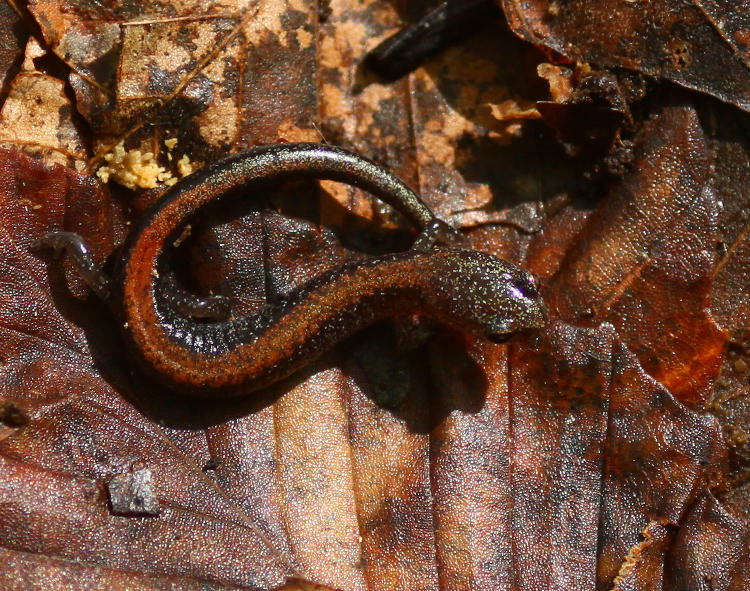
This is a red-backed salamander (Plethodon cinereus,) only about five centimeters in overall length, freezing in place as long as we didn’t move too abruptly, but after only about 10-20 seconds in the sunlight, it re-sought shelter under the wet leaves. There’s a narrow patch on two or three counties in central North Carolina that they appear, but then other patches in the western mountains and east onto the coastal plain – odd, but okay.
We found a half-dozen of these, actually, and while I would have liked to do more portrait shots, access in the hollows under the logs was difficult for that kind of low angle, plus I knew they wouldn’t hang around for the highly-visible movement that was required, so I never bothered trying. A few of them slipped from sight before we could even bring the cameras to bear.
We had better luck with the next discovery, though.
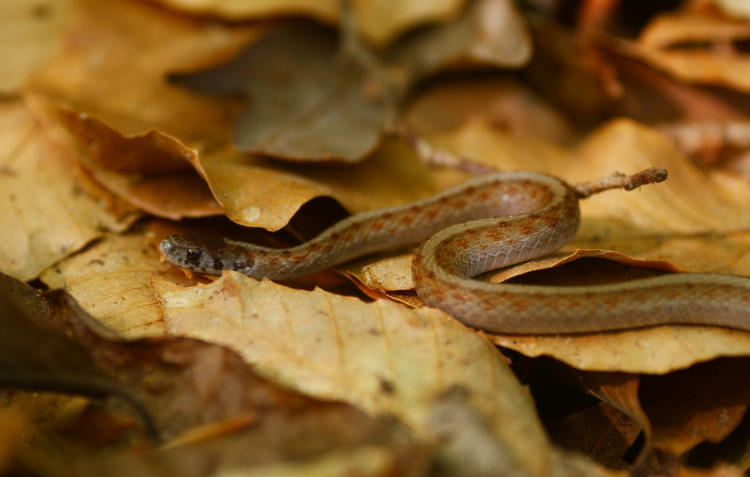
Brown snakes (Storeria dekayi) tend to be pretty mellow and count on their camouflage, so slow movement often won’t disturb them, and after Buggato got his frames, I relinquished the raised log to him and sprawled on the ground for my own shots, with the snake cooperating nicely. Brown snakes don’t get very big, and the listed average of 25cm seems high to me; this one was only about 15, a little less than typical in my experience. I’d be delighted (and more than a little surprised) to find one that was the listed maximum of 50cm long.
While down there, I was able to turn a little and shoot some low angle frames of another find, one that had hopped away from our feet as we approached.
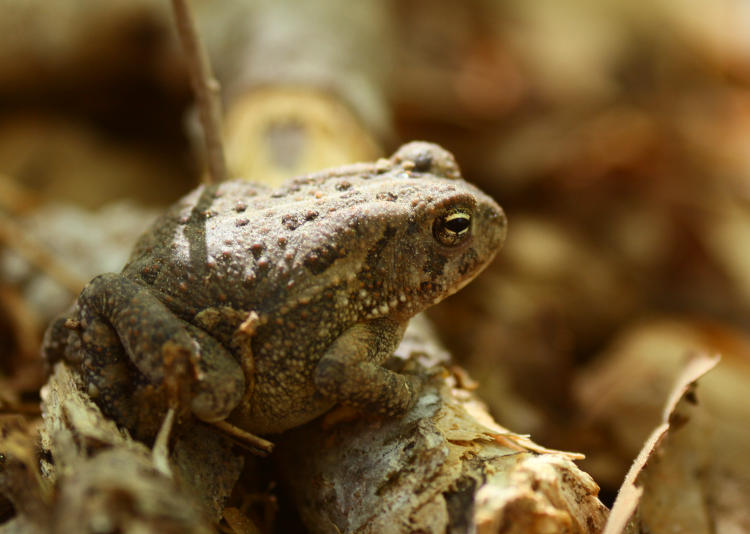
Yeah, okay, it’s only an American toad (Anaxyrus americanus) – so common that I often see them in our driveway at night, but it was there and so was I, able to do a tight closeup, so, yeah.
I include a tiny bit of variety, because I was fascinated by these and had to get a few frames.
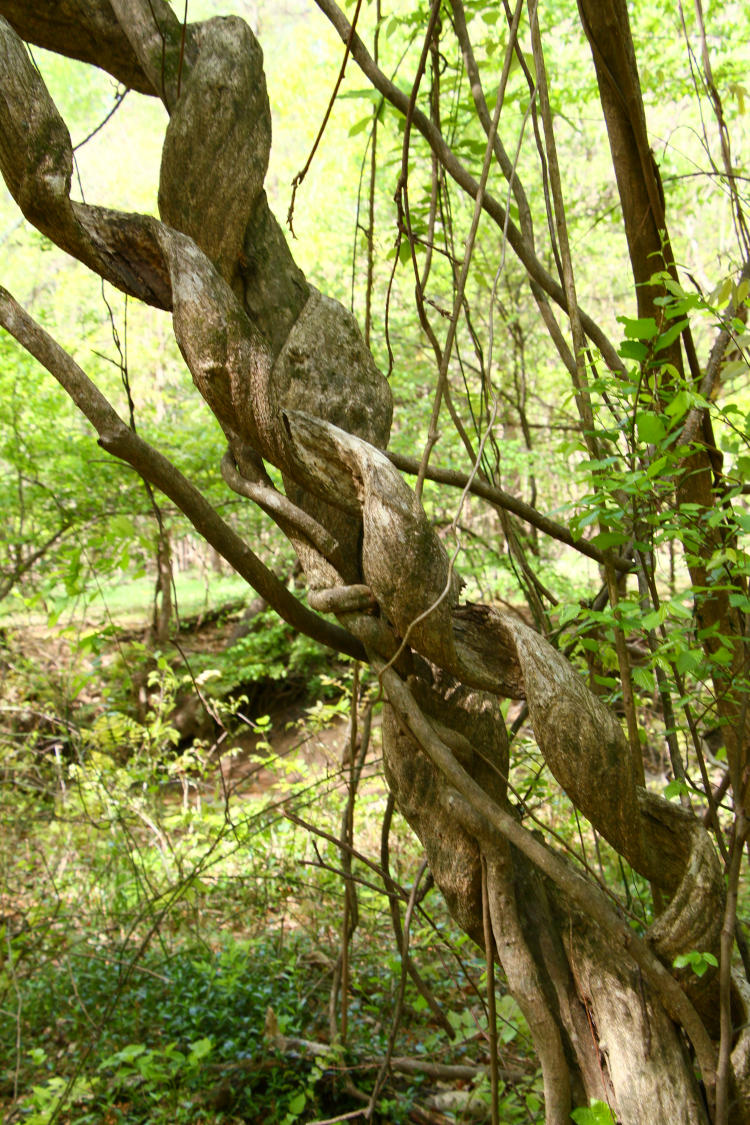
I didn’t look to see if these were still alive, and if so what was growing from them, so I can’t say if they were vines (which I consider likely) or not. But they were the thickness of my calf, much larger than most vines. Strangler fig, maybe? I don’t know, but they were still cool.
I wanted to try some frames aiming along their lengths, but they were growing from a narrow drainage channel going down the hillside, still holding water, and getting a low enough angle would have been difficult and covered me in mud, so I settled for shooting blind, holding the camera down low and aiming up without being able to see anything at all. Didn’t turn out too badly for that.
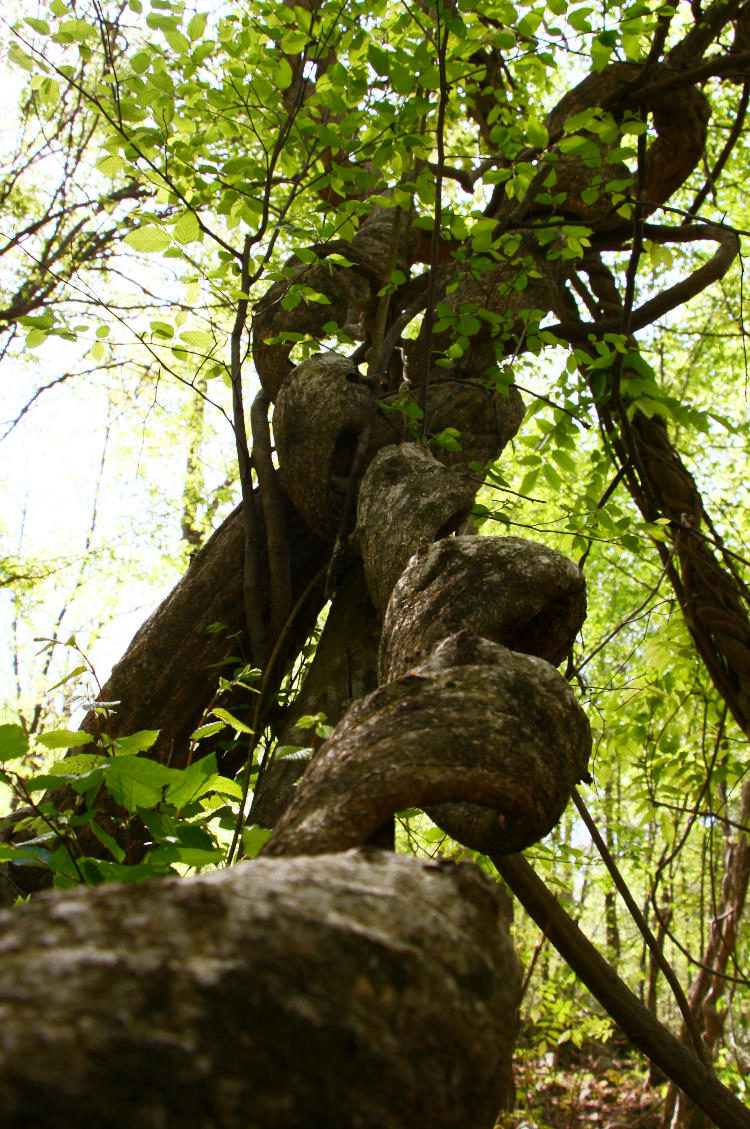
This was Buggato’s cue to jump in and try to catch me chimping, which is examining the LCD after tripping the shutter to see what was captured – he’s been endeavoring to record this behavior from me for quite some time now, without success because I simply don’t do it. And even though this was an acceptable time to do so, because I had no firm idea where I was aiming, I refused solely because he was watching – it was more fun than confirming I got the framing correct. However, without trying, I still managed to capture him attempting to capture me.

Obviously, he wasn’t considering the angle my camera was aimed, but at least he wasn’t in every frame. And he’s got the camera up to his eye.
He made the attempt later on as well, as we found an American five-lined skink (Plestiodon fasciatus) basking on a branch.
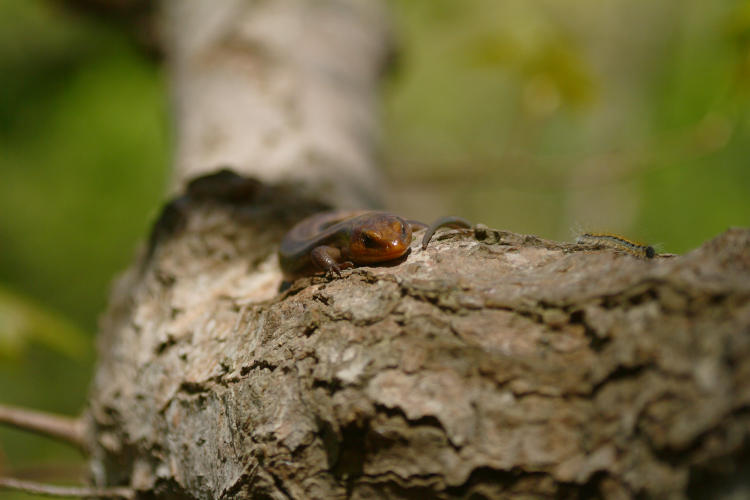
This is a male, and a good-sized one at that, and after Mr Bugg got his frames, I started moving in slowly to do the tight macro, seeing how close I could get. This ended up being pretty close.
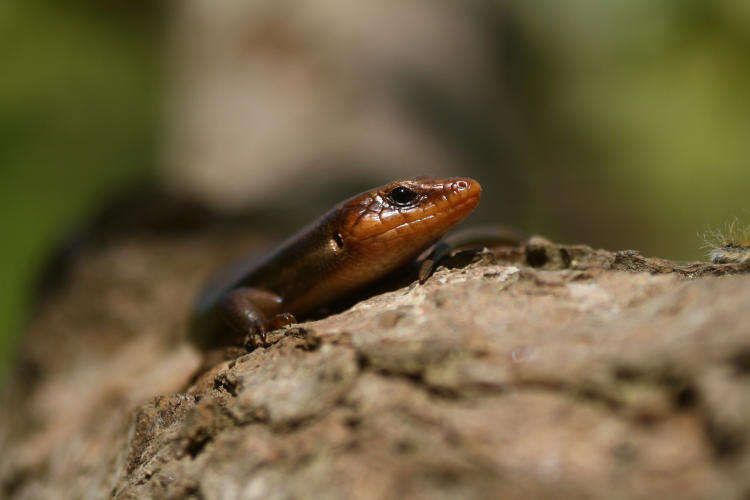
This is the full frame, and I’ll be honest: I think he raised his head and turned because he was more alarmed at the noisy great blue heron that flew past quite a few meters behind him than by my presence, but the heron was moving a whole lot faster than I. Let’s go in for a detail crop:
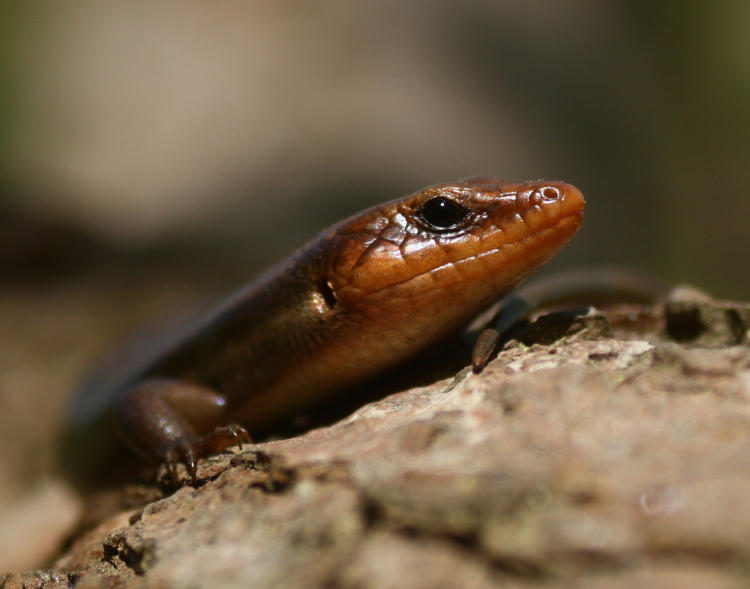
Turning his head gave me better focus with the lens set at f4 for the natural light conditions, so I was cool with that. I watched him blink a few times, almost lazily, and he never moved from this spot as I closed in, shot my frames, and backed away again, but I wasn’t moving quickly and that helps a lot. While doing this Buggato was shooting his own frames, as I said, hoping to catch me chimping, but the only time I do that with macro work is to ensure that the flash is aimed properly for the subject, and I wasn’t using the flash here. But this demonstrates how close I approached, and how big the skink was.

That’s the workhorse Mamiya 80mm f4 macro in use, possibly forty years old and the sharpest lens I’ve used. Manual focus and aperture (because it’s intended for the Mamiya M645 series of medium-format cameras and has no interface with Canons,) but I can cope with that – have been for years.
Boy, it didn’t take long for that beard to go solid white. I’d estimate about seven years, I think…
Soon to come: more birds, plus I still have to get part three of a series finished and posted, so that may sneak in. But it’s good to have a choice of subjects to post now.



















































